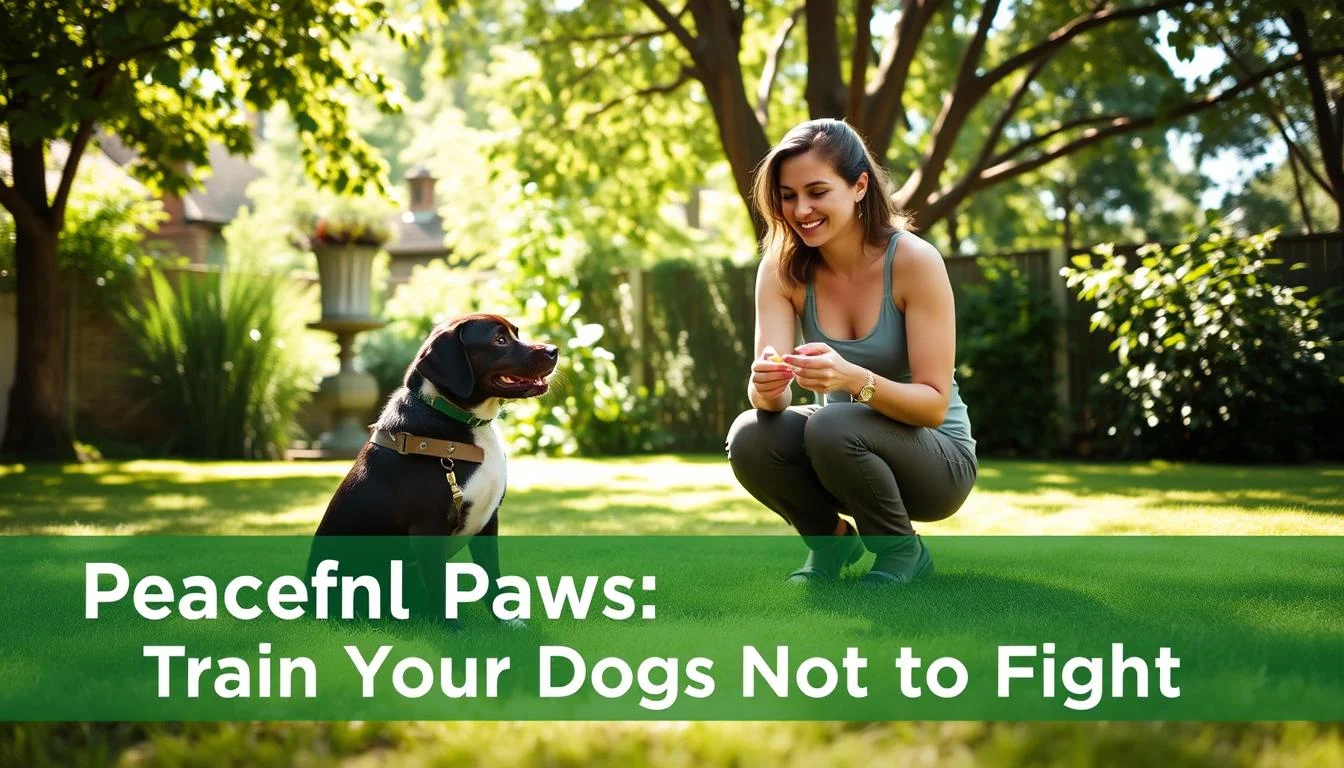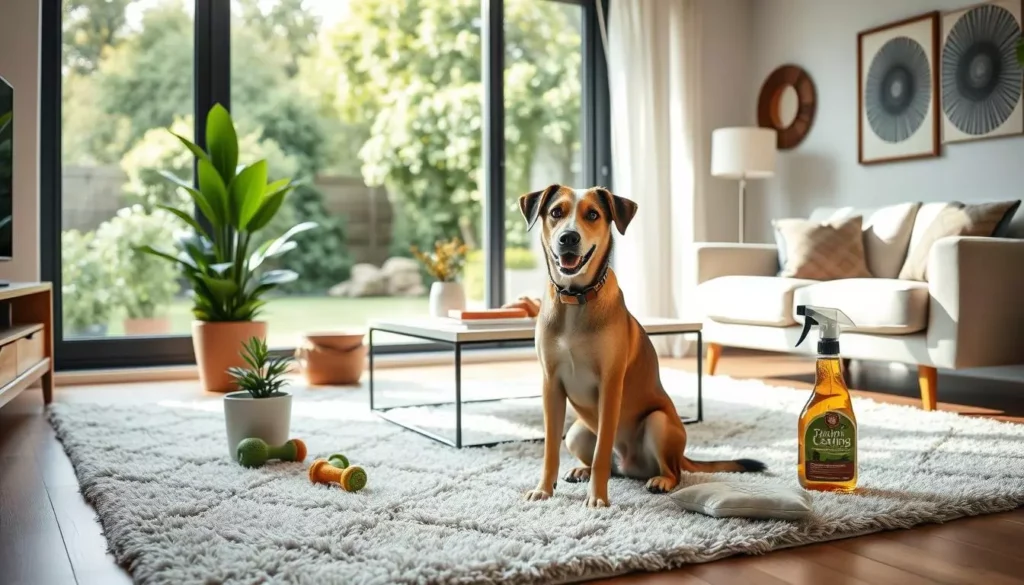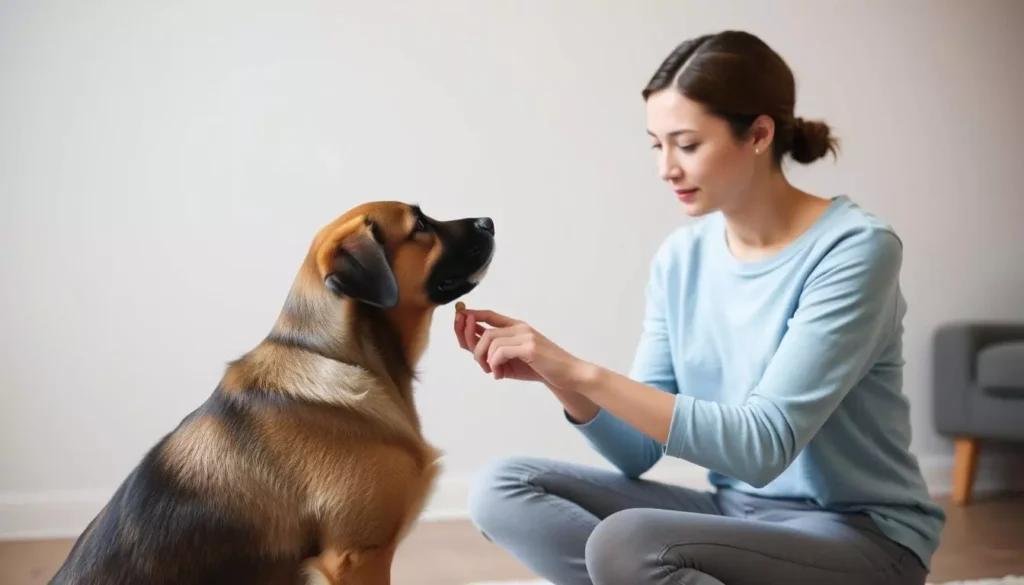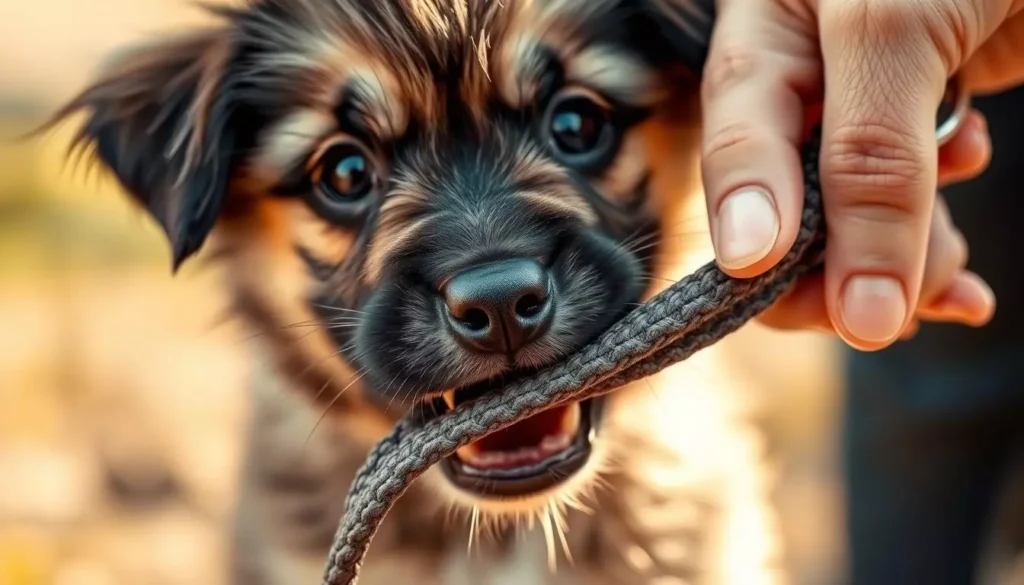Dogs are more than pets; they're part of our family. I recall the first time my two dogs fought, growling and barking. My heart was racing, worried for their safety and our bond.
Learning to stop them from fighting became my goal. In "Peaceful Paws," I share key insights and training methods. These have helped me create a calmer home. Together, we can learn to prevent dog aggression and strengthen our bond with our pets.
Key Takeaways
- Understanding canine aggression is critical to effective training.
- Identifying signs of potential conflict can help prevent fights.
- Establishing a calm environment is vital for dog behavior training.
- Positive reinforcement fosters a trusting relationship with your pets.
- Socialization plays a significant role in preventing aggression.
- Consistency in training is essential for long-term success.
Understanding Canine Aggression
It's key to understand canine aggression to keep my dogs happy together. Many things can cause this behavior. Experts say it often comes from fear, defending territory, or not getting along with others.
Knowing what makes my dogs aggressive helps me manage their behavior. I can spot when they're stressed or feel threatened. This lets me act fast to keep things calm.
Learning to read my dogs' body language is important. Signs like raised hackles or a stiff tail mean they're upset. This knowledge helps me train them better, making our home more peaceful.

Using the right training methods helps my dogs get along better. Positive reinforcement builds trust and makes them feel safe. This way, our home stays friendly and balanced.
Signs Your Dogs May Be Ready to Fight
It's important to know the signs of dog aggression to keep peace among pets. Look for stiff body language, raised hackles, and growling. These signs show tension is growing.
Direct eye contact between dogs can mean they're trying to be in charge or challenge each other. This can lead to fights.
Other warning signs in dogs include loud barking and lunging. These actions show a dog is trying to control its area or feels threatened. Spotting these warning signs helps me stop fights before they start. It keeps my pets safe and happy.
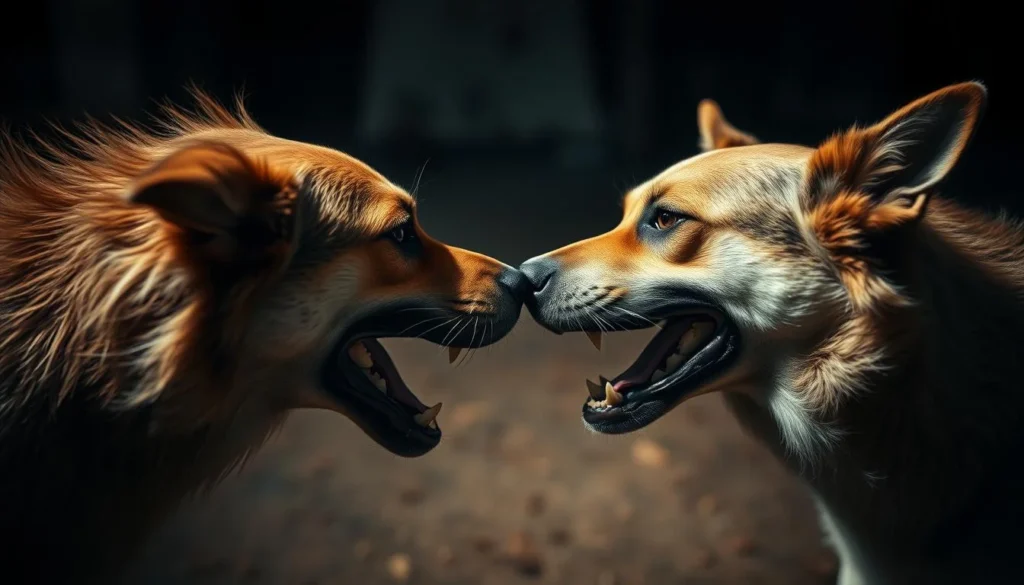
How to Train Your Dogs Not to Fight
Training dogs not to fight takes careful planning and dedication. One important step is creating a calm space where they feel safe. This helps them learn without stress that might lead to fights.
Establishing a Calm Environment
A peaceful setting is key to reducing dog fights. I use several methods to achieve this calm:
- Controlled breathing helps me stay calm, setting a good example for my dogs.
- Reducing loud noises and distractions keeps the environment peaceful.
- Using familiar, comfortable areas helps my dogs feel at ease.
Understanding Dog Body Language
Knowing how to read dog body language is crucial. I watch for signs that show how they're feeling. Some important signs include:
- Ears back can mean fear or discomfort.
- A wagging tail doesn't always show happiness; its speed and direction matter.
- Posture, like raised hackles, can mean they're ready to defend.
By paying attention to these signs, I can act quickly to prevent fights. This might mean changing our surroundings or redirecting their focus.
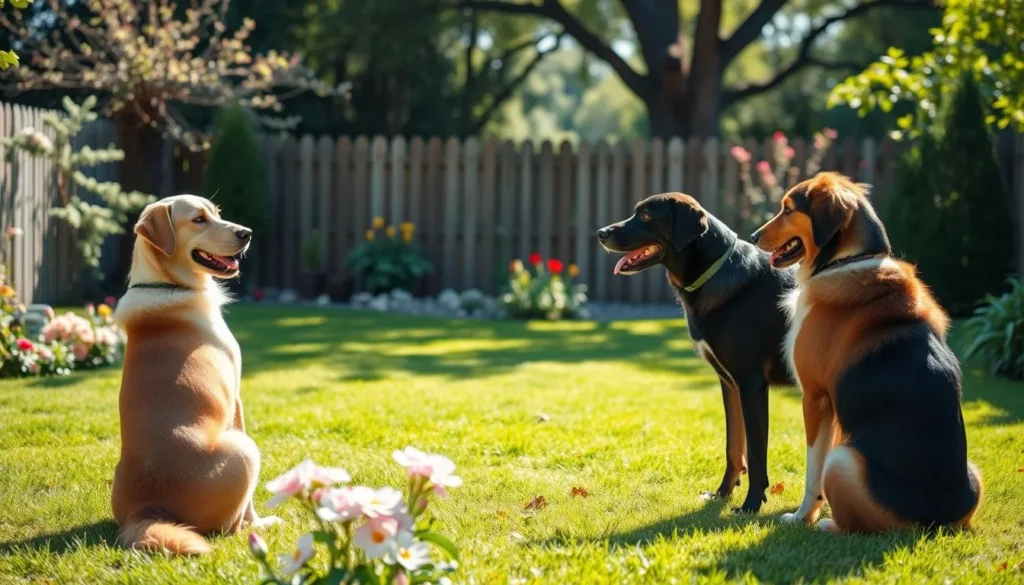
Techniques for Managing Dog Aggression
Managing dog aggression needs a careful plan. I focus on training to stop aggression early. I watch my dogs closely to keep peace.
Proactive Measures and Precautions
Training is key to less aggression. Watching my dogs during play or meeting others helps me spot issues. I use:
- A safe space for them to escape if needed.
- Consistent commands for calm behavior.
- Staying away from things that might upset them.
The Role of Socialization in Dog Behavior
Socialization shapes a dog's behavior. I expose my dogs to new places, people, and animals. This makes them more confident and less scared. I do:
- Playdates with friendly dogs for good interactions.
- Dog training classes for controlled exposure.
- Slowly introduce new things for adjustment.
Effective Dog Training Methods for Aggression
Using the right dog training methods can really change our home life, especially when dealing with aggression. I focus on positive reinforcement techniques. This means I reward my dogs for being calm, so they do it more often.
I also redirect any aggressive behavior to better actions. This turns bad situations into chances for good interactions. Training sessions are key, helping my dogs learn obedience and what's expected of them.
This approach lowers tension at home and cuts down on dog fights. These methods improve my dogs' behavior and make our home a more peaceful place for all.
| Training Method | Description | Benefits |
|---|---|---|
| Positive Reinforcement | Rewarding good behavior with treats or praise. | Encourages repeat of desired behaviors; builds trust. |
| Redirecting Aggression | Diverting aggressive actions to alternative activities. | Prevents escalation of fights; promotes better behavior. |
| Structured Training Sessions | Regular, organized training meetings focused on obedience. | Establishes clear expectations; builds routine. |
Setting Boundaries and Rules for Your Dogs
Setting clear boundaries is key for my dogs to know what's okay. Keeping up with consistent training helps them understand these rules. This way, they feel safe and don't act out, like being aggressive.
Importance of Consistency in Training
Consistency in training is vital for my dogs to know what's expected. It builds trust and clarity. Each rule and command must be the same, so they learn easily without getting mixed up.
This consistency stops fights by avoiding misunderstandings.
Using Positive Reinforcement Techniques
Positive reinforcement makes training fun and effective for my dogs. Rewarding good behavior with treats or praise makes them want to do it again. This approach creates a happy home where everyone gets along.
Tips for Stopping Dog Fights Before They Start
To keep my pets happy, I focus on giving them enough exercise and mental play. Regular walks and fun games help them release energy and stay calm. Puzzle toys keep their minds active, reducing fights.
When things get tense, I use commands like "sit" or "come" to calm them down. This teaches them good behavior and helps avoid fights. Knowing how they act helps me stop problems before they start.
Consistent training and clear rules are key. These steps help my dogs live in peace. It's all about creating a calm home for them.
Canine Conflict Resolution Strategies
Managing dog fights needs smart strategies that change their behavior. Knowing how to talk to dogs helps avoid fights. Two key methods are using specific commands and understanding their impact on behavior. These steps help create a peaceful home.
Using Commands to Redirect Behavior
Verbal commands are key in solving dog fights. Commands like "come," "sit," and "stay" help me control my dogs. When I see a fight starting, these commands help shift their focus and stop aggression.
This approach keeps me in charge and makes the environment calm.
The "Leave It" Command: A Powerful Tool
The "leave it" command is very effective. It teaches dogs to ignore things that might cause trouble. By practicing this command, I show my dogs who's in charge.
Using "leave it" in training helps solve dog conflicts. It's a big part of keeping peace in the home.
Conclusion
Understanding dog behavior is key to improving it. Recognizing aggression early is vital. This lets me act fast to keep everyone safe and happy.
Positive reinforcement and clear rules have helped a lot. With time and effort, my dogs now play nicely together. This effort strengthens our bond and makes our home peaceful.
Looking back, I'm more determined than ever to keep training. Seeing my dogs change for the better fills me with hope. I'm sure we can create a joyful and friendly home together.

